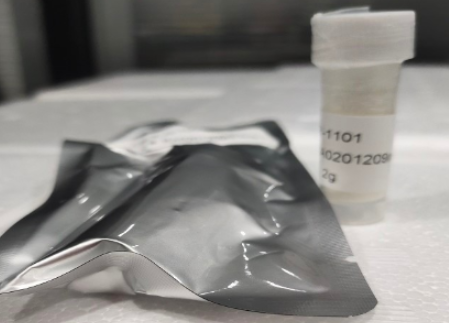文献:Ligation Strategies for Targeting Liposomal Nanocarriers
作者:Patricia Marqués-Gallego, Anton I. P. M. de Kroon
文献链接:https://onlinelibrary.wiley.com/doi/full/10.1155/2014/129458
摘要:
Two different approaches with two different anisamide derivatives were described for conjugating the targeting ligand to the DSPE-PEG-amine phospholipid. In the first approach, 7-[2-(4-methoxybenzylamino)-ethylamino]heptanoic acid was conjugated to the DSPE-PEG-amine lipid using standard DCC/DMAP chemistry for amine-carboxyl conjugation. The second approach yielded the N-alkylated lipid using an N-(2-bromoethyl)-4-methoxybenzamide derivative and DSPE-PEG-amine. The authors showed that the synthesis of the anisamide-lipid by the second approach has 10-fold greater yield than the standard amine-carboxyl coupling. The anisamide-lipid was mixed with the other lipids (POPC and cholesterol) at the desired concentration to form liposomes in citrate buffer (pH 4.0). Controlling the amount of targeting ligand included in the liposomes is an additional advantage of this approach. Doxorubicin was then loaded into the liposomes using the transmembrane pH gradient (acidic inside) according to the remote loading technique developed by Mayer et al. [54]. The formulation showed promising results in the in vivo treatment of DU-145 tumors in nude mice. The partitioning of the ligated lipid between the exterior and the interior of the liposome upon liposome formation must be considered, with an estimated 50% of the targeting ligand entrapped in the inner side of the bilayer. Positive results obtained in in vitro studies targeting sigma receptors suggested sufficient targeting ligand on the outer side of the liposome bilayer. Possible leakage of doxorubicin from the liposomes induced by the presence of the ligand was not examined.

描述了用两种不同的茴香酰胺衍生物将靶向配体偶联到DSPE-PEG胺磷脂的两种不同方法。
在第一种方法中,使用标准DCC/DMAP化学方法将7-[2-(4-甲氧基苄氨基)-乙基氨基]庚酸偶联到DSPE-PEG胺脂质上,用于胺羧基偶联。
第二种方法使用N-(2-溴乙基)-4-甲氧基苯甲酰胺衍生物和DSPE-PEG胺产生N-烷基化脂质。作者表明,通过第二种方法合成茴香酰胺脂质的产率比标准胺羧基偶联高10倍。
将茴香酰胺脂质与其他脂质(POPC和胆固醇)以所需浓度混合,在柠檬酸盐缓冲液(pH 4.0)中形成脂质体。控制脂质体中包含的靶向配体的量是这种方法的另一个优点。
然后根据Mayer等人开发的远程加载技术,使用跨膜pH梯度(内部呈酸性)将阿霉素加载到脂质体中。该制剂在裸鼠体内治疗DU-145肿瘤方面显示出有希望的结果。
必须考虑脂质体形成时连接的脂质在脂质体外部和内部之间的分配,估计50%的靶向配体包埋在双层的内侧。在针对sigma受体的体外研究中获得的阳性结果表明,脂质体双层外侧有足够的靶向配体。未检查配体存在诱导阿霉素从脂质体中泄漏的可能性。
相关推荐:
DSPE-PEG-c(RGDfk)
DSPE-PEG-c(RGDfK)-FITC
DSPE-PEG-c(RGDfK)-Biotin
DSPE-PEG-c(RGDfc)
DSPE-PEG-GE11
DSPE-PEG-PTP
DSPE-PEG-T7(HAIYPRH)
DSPE-PEG-TH
DSPE-PEG-YIGSR
DSPE-PEG-NGR
DSPE-PEG-Angiopep-2
以上文章内容来源各类期刊或文献,如有侵权请联系我们删除!




 齐岳微信公众号
齐岳微信公众号 官方微信
官方微信 库存查询
库存查询